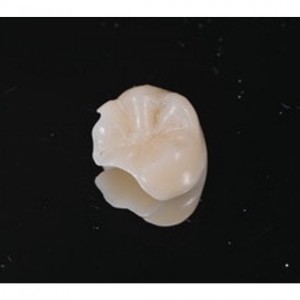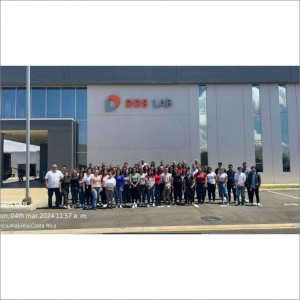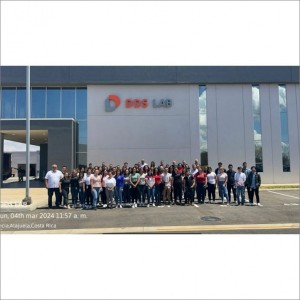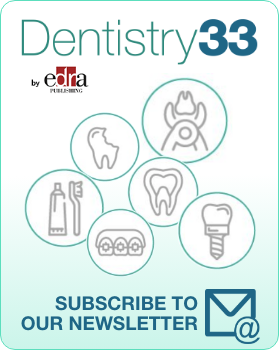
Which therapy is more effective for the treatment of fluorosis?
Simona Chirico
INTRODUCTION
Dental fluorosis is a chronic condition due to excessive ingestion of fluoride. This leads to a disturbed enamel formation characterized by hypomineralization of tooth enamel, seen as diffuse, symmetrical, discolored white opaque stains and striations. Enamel surface lesions, such as pitting, porosity, and brownish areas often occur in the more severe forms of fluorosis. These clinical signs depend on the amount of fluoride uptake, duration of fluoride exposure and stage of amelogenesis. A wide range of interventions have been proposed to treat fluorotic enamel, such as:
- microabrasion: based on the application of an etching gel (mostly HCl) followed by pumicing with slow rotation handpiece;
- external bleaching: based on the application of acids (mostly H2O2) that produces peroxide ions to penetrate enamel and dental tubules;
- enamel infiltration with low viscosity light-cured resins: to hide fluorotic stains, because of the resin’s similar to enamel refractive index.
Which of these is the best? A review published on the 2018 Journal of Esthetic and Restorative Dentistry compared all these treatments to give an answer.
MATERIALS AND METHODS
The authors searched from nine database only randomized clinical trials from 2016. Only six studies were included, with a total of 348 patients (40% male and 60% female) with a mean age of 17,7 years. They were divided into three groups and treated with bleaching, microabrasion or resin infiltration. All the groups were compared by calculating: mean differences (MD), relative risks (RR) and the corresponding 95% confidence intervals (CI).
RESULTS
Bleaching was adopted as a reference intervention, because it contributed with the largest number of trials.
Compared to no treatment, bleaching improved all colorimetric aspects, even if fewer bleached fluorotic areas tended to have discernable color differences from healthy enamel (RR = 0.68; 95% CI = 0.43-1.08).
In the comparison between microabrasion and bleaching, microabrasion resulted in smaller esthetic improvement compared to bleaching (MD: -2,9; 95% CI: -3,4 to -2,5).
In the comparison between resin infiltrations and bleaching, resin infiltrations had a greater esthetic improvement compared to bleaching (MD: 3,6; 95% CI: 2,7 to 4,6).
CONCLUSIONS
Based on current evidence, resin infiltrations seems to be the most effective treatment for dental fluorosis, followed by bleaching and microabrasion.
For additional informations:
Interventions for dental fluorosis: A systematic review
 Related articles
Related articles
By Lorenzo Breschi and Diego D’Urso
Despite the promising opportunities provided by selective procedures, not all of the clinical procedures in restorative dentistry are supported by good research.
The new guidelines suggest conservative methods to treat tooth decay could lead to better outcomes when used with common restorative materials like fillings or caps.
The expansion is in response to demand and success attained in Dental Implants GPS’ inaugural Southern California centers in Dana Point and Huntington Beach.
In the clinical practice of a dentist, it often happens that you must re-operate on restorations performed in the past and often the most common causes can be traced back to secondary caries,...
By Lorenzo Breschi and Diego D’Urso
The purpose of using biomimetic concept is to conserve tooth structure and vitality, increase the longevity of restorative dental treatments, and eliminate the need for future retreatment. Singer et...
 Read more
Read more
Digital Dentistry 18 April 2024
The Columbia University College of Dental Medicine (CDM) and the Fu Foundation School of Engineering and Applied Science have received approval from the New York State Department of Education to...
Dr. Richard Eidelson, DDS, MAGD, a nationally recognized leader in cosmetic dentistry, is thrilled to announce the opening of his second dental practice, Premier Dentist Philadelphia, located in the...
DDS Lab (DDS), one of the largest full-service dental laboratories in the world, today announced the commencement of operations out of its new state-of-the-art, full-service dental laboratory based...
The global electric toothbrush market size is estimated to grow by USD 2780 million from 2023 to 2027, according to Technavio. The market is estimated to grow at a CAGR of over 8.24% during the...












d5.jpg)


